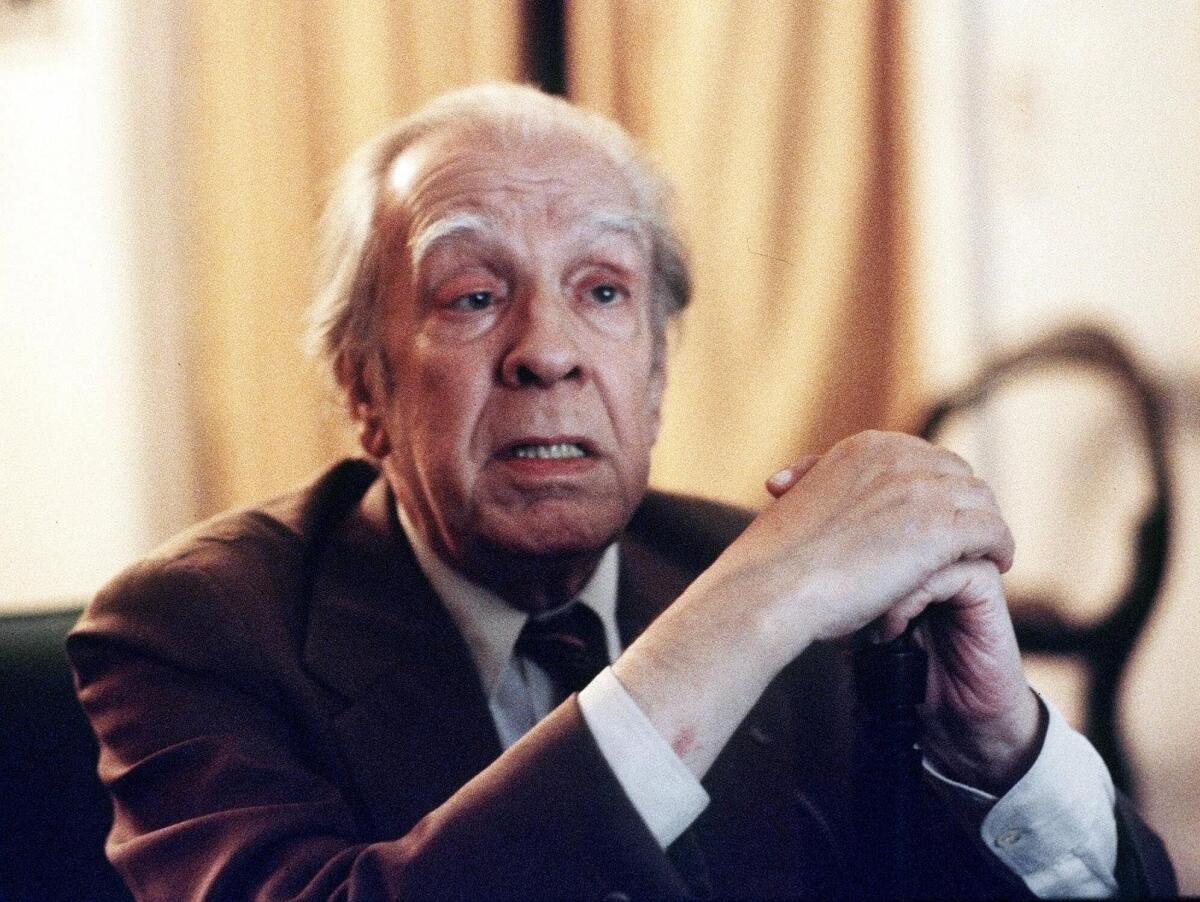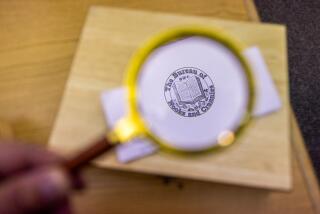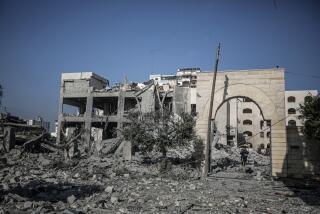Borges’ ‘Library of Babel’ comes to virtual life

Jorge Luis Borges, photographed in his Buenos Aires apartment in 1981. Borges’ 1941 short story “The Library of Babel” is the inspiration for a new website.
- Share via
Almost three quarters of a century after it was published, Jorge Luis Borges’ “The Library of Babel” continues to resonate.
A year and a half ago, the online magazine Places Journal published a set of architectural drawings representing the story’s setting — a library, “composed of an indefinite and perhaps infinite number of hexagonal galleries,” in which are collected not only every book ever written but also every book never written, possibility and perplexity blurring into one another in unexpected ways.
Now, a Brooklyn writer named Jonathan Basile has begun to recreate the library in more concrete form, on a website — called, appropriately enough, “The Library of Babel” — that, if ever completed, “would contain every possible combination of 1,312,000 characters, including lowercase letters, space, comma, and period.”
That this is impossible is part of the point, as it was of the original story. Nonetheless, Basile told Flavorwire in a recent interview, he has already constructed 1,024,640 digital volumes “by generating text documents with random letters, and then reading from those files to serve the web pages.”
I’ve been looking through the, er, shelves, and thus far have yet to find anything comprehensible — anything other than chance accumulations of letters and punctuation marks, in other words.
But this is part of the point, as well.
In his conversation with Flavorwire, Basile makes these intentions explicit. “When I started building the site,” he explains, “I actually had in the back of my mind the idea that a searchable, virtual Library of Babel might make it possible to find a few of those rational arrangements of letters. I very quickly realized how incorrect I was.”
For Basile, this has become the centerpiece of the Library of Babel, which allows a “brief glimmer of hope that reason might win out over unreason, then crushes it. … The library creates a tantalizing promise of reason — somewhere in its pages are all the works lost in the burning of the Library of Alexandria, and every future masterpiece — but drowned out by infinite pages of nonsense.”
Can I tell you how much I love this project? Almost as much as the story itself. Chaos, after all, is what we write against, what we collect against, and yet, it will consume us anyway. The entire history of thought, of literature, is an attempt to mitigate this, and yet for all our logic, we remain entirely susceptible to chance.
“[Y]ou must remember,” Terry Southern wrote in his 1970 novel “Blue Movie,” “that the most cruel and ironic tragedy of life is our inability to do what must be done when it must be done … instead we are like the reed, tossed about on the waves of chance.”
The same might be said about the Library of Babel, which is both artifact and idea. You can peruse it visually, by clicking on one of its many hexagons of shelving, and then clicking again on a particular spine on a particular shelf.
This sense of shape, of structure, is not an illusion; as Basile reassures us, “Any book you check out today will be in the same location (the library is divided into hexagons each with 4 walls, 20 shelves, and 640 volumes) on any future visit to the library.”
Order, then, feeding (or reflecting) a particular sort of disorder, the disorder of a library, of a universe, we will never fully comprehend.
twitter: @davidulin
More to Read
Sign up for our Book Club newsletter
Get the latest news, events and more from the Los Angeles Times Book Club, and help us get L.A. reading and talking.
You may occasionally receive promotional content from the Los Angeles Times.







